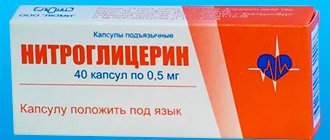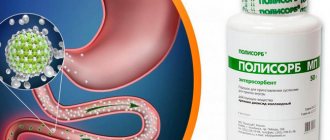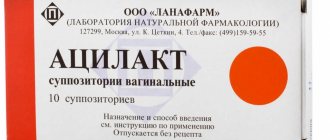Suprastin is an antihistamine for the treatment of allergic reactions and diseases accompanied by itching, such as hay fever, conjunctivitis, urticaria, dermatitis caused by plants and chemicals, as well as for the treatment of symptoms of food, drug and insect sting allergies.
What are the tablets used for?
Suprastin is produced in ampoules and tablets. In the form of injections, this medicine is used mainly in hospital settings, when it is necessary to eliminate severe manifestations of allergies (loss of consciousness, anaphylactic shock). Therefore, Suprastin tablets are most often purchased for the home first aid kit. What do they help with? Indications for their use are:
- rhinitis and conjunctivitis of allergic origin;
- contact dermatitis;
- hives;
- pathological reaction to medications, foods, insect bites, UV radiation.
What else does Suprastin help with? This antihistamine will help eliminate the characteristic signs of allergies: itching, cough, rash, swelling, low blood pressure - in other words, relieves its most painful symptoms. If you find Suprastin at home, then it is advisable to use it for infectious lesions of the ENT organs, which are accompanied by otitis media and a severe runny nose. This medicine will quickly relieve swelling in the nose and restore nasal breathing. Suprastin is given to children after vaccination, and to adults after tooth extraction. Also, do not forget that Suprastin should be given along with an antipyretic at high temperatures.
Indications for use
Chloropyramine hydrochloride, a chlorinated analogue of tripelenamine (pyribenzamine), is a first-generation antihistamine that belongs to the group of ethylenediamine antihistamines. A blocker of histamine H1 receptors, has an antihistamine and m-anticholinergic effect, has an antiemetic effect, moderate antispasmodic and peripheral anticholinergic activity. The therapeutic effect of chloropyramine (in tablets) develops within 15-30 minutes after oral administration, reaches a maximum within the first hour after administration and lasts at least 3-6 hours. Indications:
- hives;
- serum sickness;
- seasonal and year-round allergic rhinitis;
- allergic conjunctivitis;
- contact dermatitis;
- skin itching;
- acute and chronic eczema;
- atopic dermatitis;
- food and drug allergies;
- allergic reactions to insect bites;
- angioedema (Quincke's edema) - for solution.
It is excreted mainly by the kidneys in the form of metabolites. Pharmacokinetics in special clinical situations. In children, drug elimination occurs faster than in adults. In patients with impaired liver function, the metabolism of chloropyramine is reduced, so the dose of Suprastin may be reduced. In patients with impaired renal function, the excretion of the active substance is reduced, so the dose of Suprastin may be reduced.
Pharmacological category
Suprastin is produced by the manufacturer in the form of white tablets without a specific odor. Belongs to the pharmacological group of histamine receptor blockers. Suprastin contains the active substance chloropyramine hydrochloride with a concentration of 25 mg in each tablet. The auxiliary components of Suprastin include stearic acid, potato starch, gelatin, lactose monohydrate.
How should adults drink?
Before starting therapy, you need to carefully study the instructions in order to understand exactly how to take Suprastin for allergies in adults to quickly normalize well-being and prevent its deterioration. This drug is prescribed for food and respiratory allergies, as well as a reaction after contact with an allergen. It can be taken both as a prophylactic and to eliminate allergy symptoms. The peculiarity of this medicine is its short-term effect, so the tablets must be used at least 3 times a day to obtain the desired result. The dosage and frequency of use are selected by the doctor individually.
When answering the question of how much Suprastin to take for allergies in adults for prevention, it must be said that 1 tablet per day is enough. This will prevent a strong reaction from occurring.
According to the instructions for use of the Suprastin tablet, adults are prescribed for allergies 4 times daily every 6 hours.
The maximum daily dosage is 400 mg. This is enough for the main allergy symptoms to no longer bother you. The tablets are white and small in size. They taste bitter, so they need to be washed down with plenty of water. Many people are interested in how to take Suprastin for allergies by adults - before or after meals. It must be said that eating does not affect the speed of action of the drug and its effectiveness. How many days to take Suprastin for allergies in adults is determined separately for each person. The course of therapy generally lasts 5-7 days. The medicine can be used as part of complex therapy, but strictly as prescribed by the doctor.
Dosage of Suprastin for children
The frequency of taking the medication depends on the severity of allergic manifestations. For mild manifestations, the drug can be given to children once a day. Allergies with severe manifestations require three doses of medication. The instructions for using Suprastin for children warn that they should not take the medicine for more than a week. Long-term use is fraught with side effects. If the symptoms do not subside within a week, then you need to adjust the treatment with the help of a doctor.
In some emergency situations, such as insect bites, suprastin is prescribed for infants. Therefore, if you have an infant, you need to know in advance what doses of the drug are safe for a newborn. Children up to one year old are given one tablet per day, divided into four parts in 2-3 doses. How to give medicine to a baby if he can’t swallow a pill, and the baby won’t be able to give an injection. Therefore, a suspension is prepared: the required amount of medicine is ground into powder, diluted with water (breast milk) and carefully poured over the cheek from a spoon or given from a nipple.
Suprastin is given to children under 3 years old by analogy with infants. If the allergic manifestations are severe, then you will have to give an intramuscular or intravenous injection, so the medicine will work faster. For children from one month to three years, the daily dosage should not exceed 2 mg per kilogram of body weight. For example, the baby’s weight is 4 kg, which means the dosage is 8 mg per day. You can use this medicine yourself only to provide emergency care once, after which you should immediately contact a doctor.
How long does it take for Suprastin to work?
The antihistamine drug Suprastin for allergies has been successfully used for a long period of time to relieve any conditions that are associated with the uncontrolled process of histamine release. In emergency cases, injectable forms for intramuscular and intravenous administration are used to quickly eliminate negative symptoms. For long-term treatment of chronic diseases, it is recommended to use Suprastin tablets in dosages recommended by the attending physician, taking into account the age and condition of the patient.
Can be used in complex therapy of allergic diseases in both children and adults.
Suprastin is contraindicated during pregnancy. However, sometimes exceptions are made, this is due to its versatility, speed and low price. The 1st trimester in this regard is the most important due to the beginning of the formation of all vital organs.
The negative impact of the drug during this period is considered maximum. According to some studies, when a pregnant woman takes Suprastin, a miscarriage or developmental defects in the baby are possible. Therefore, the drug is not prescribed.
Contraindications
Taking Suprastin is contraindicated in the following conditions:
- acute attacks of bronchial asthma;
- stomach ulcer;
- angle-closure glaucoma;
- treatment with MAO inhibitors;
- arrhythmia;
- acute myocardial infarction;
- prostate hyperplasia;
- urinary retention;
- hypersensitivity to ethylenediamine derivatives;
- allergy to the active or excipients of the drug;
- pregnancy and lactation;
- age up to 3 years;
- Administration of the solution to newborns and premature infants is contraindicated.
Side effects in adults
The active substance of Suprastin is chloropyramine hydrochloride. The principle of action is to block allergy-causing H1-histamine receptors. It has well-defined antipruritic and decongestant properties, so it is used in the following cases:
- allergic rhinitis and conjunctivitis (inflammation of the ocular mucous membrane);
- urticaria, hay fever, other allergic dermatitis;
- serum sickness;
- angioedema (Quincke's edema);
- eczema in chronic or acute form;
- contact or atopic dermatitis;
- insect bites;
- bronchitis, especially in children.
In addition to the antihistamine, the drug has an antiemetic effect. The medication is available in 25 mg tablets and 1 ml ampoules. When taken in tablet form, its effect begins within 20-30 minutes, depending on the patient’s weight. The maximum effect occurs within an hour and lasts on average 8-12 hours. After injection, the drug immediately enters the bloodstream, and its effect begins within 5 minutes. An intramuscular injection lasts 3 hours, intravenous - 1.5. To increase the duration of the injection after the injection, it is recommended to take a Suprastin tablet. From the central nervous system are observed
:
- drowsiness;
- increased fatigue;
- dizziness;
- nervous excitement;
- tremor of fingers;
- unreasonable euphoria.
In addition, with constant use, children experience increased anxiety, excitability, and difficulty concentrating.
Patients of certain categories
Suprastin should be given to a child aged 4 years with extreme caution if the child suffers from the following diseases:
- liver and kidney failure;
- acute form of bronchial asthma;
- physical exhaustion of the body, deficiency of vitamins and minerals;
- angle-closure glaucoma;
- urinary retention;
- cardiovascular diseases.
In such cases, the pediatrician evaluates the general health of the children and decides whether to give a four-year-old child Suprastin, or to choose a safer drug, taking into account the specifics of the disease diagnosed in the child.
Suprastin and alcohol: compatibility
Suprastin and alcohol taken together increase the load on the liver to indecent limits. As with the use of antibiotics and alcohol, nothing may happen if the person being treated has a healthy liver and other internal organs. Only in this case is combined use allowed. Of course, they will put a strain on the body, but nothing bad will happen. But is it worth the risk? Of course, it may be that at the height of spring allergies you need to go to an anniversary or a wedding, but you should not combine these remedies within yourself. It’s better then to choose just one thing. Those who have treated allergies with suprastin probably know that this drug can cause drowsiness or even slight dizziness. That is why it is undesirable to use suprastin when you are driving.
Suprastin and alcohol, the consequences of taking which can be completely different, can only double each other’s effect.
Let's say that intoxication will occur much faster and with less ethanol. Do not forget about the therapeutic effect that suprastin provides; interaction with alcohol can neutralize it.
Thus, in addition to intoxication, you can also get a reverse allergic effect, which can also be dangerous for the human body. Symptoms of nausea, loss of sleep, dizziness and apathy can also appear if you use suprastin and alcohol, the compatibility of which has been quite well studied.
Interaction with alcohol
Suprastin is contraindicated to take with alcoholic beverages
Suprastin should not be taken with alcohol. The sedative and hypnotic effect, which is observed when taking Suprastin, increases when mixed with alcohol-containing drinks. Also, such a “cocktail” can provoke:
- dizziness;
- blurred vision;
- a state close to panic;
- nervous excitability;
- dry mouth;
- euphoria;
- unstable stool;
- nausea;
- convulsions;
- vomit;
- tremor;
- tachycardia;
- ocular hypertension;
- a sharp drop in blood pressure;
- arrhythmia;
- urinary retention;
- lethargy;
- drowsiness.
Suprastinex drops: dosage for children
Suprastinex is used for children of different ages. Drops are considered a more preferable form of release than tablets, which can only be taken by patients over 6 years of age. There are specific uses for different ages.
| Patient age | Scheme of application of drops and dosage |
| Patients from 2 to 6 years | For such patients, the drug is prescribed according to the standard regimen for various pathologies of allergic origin. The daily dosage is 6-10 drops, depending on the age and general condition of the child. The daily dose should be divided into 2 doses in the morning and evening, which will allow you to obtain a uniform therapeutic effect throughout the day. Duration of use is 3-7 days depending on the severity of symptoms. It is worth noting that if there is no effect from using the product, another medication is selected, and the drops are canceled |
| Children from 6 to 12 years old | Patients at this age are prescribed drops in short courses of 5-8 days. The daily dosage is 10-12 drops, it should be divided into 2 times. The drops are taken in the morning and evening |
| Patients from 12 to 18 years old | Patients over 12 years of age are prescribed 15 to 20 drops of the drug per day. As in younger patients, the dose should be divided into 2 or even 3 doses, which reduces the risk of complications and gets maximum effect. |
If the medicine is used to prevent complications after vaccination, the patient should be given the maximum permissible dose in accordance with age once a day. Treatment lasts up to 3 days, depending on the tolerability of a particular vaccine.
Instructions for use
The order of administration and the exact dosage of Suprastin tablets for children are established by a specialist. Reception is carried out during meals. The course lasts until the symptoms of the disease are completely resolved, more often - no longer than 7 days. The recommended doses are:
- 1-12 months
- 1/2 tablet three times a day; - 1-6 years
- 1/2 tablet twice a day; - 6-12 years
- 1/2 tablet three times a day.
Adults drink a whole tablet three times a day, the dose will be 75 mg/day. It can be increased to a maximum of 100 mg; drinking the product in excess of this norm is prohibited. To ensure that a young child drinks the entire dose of the drug normally, you can crush the tablet. To do this, the required dosage of the tablet should be placed between spoons and crushed so that there are no large pieces. Make a suspension from the powder - mix with baby food and breast milk. How much milk should I take? A teaspoon or tablespoon is enough. You can pour the medicine into your mouth (behind your cheek) using a syringe without a needle.
Zodak or Suprastin, which is better?
Why, given the availability and wide availability of antiallergic drugs of the II-III generations, is the first one still relevant? In addition, Suprastin, which contains an old antihistamine, is almost unknown outside the CIS countries and, even despite its European origin, is now used in few places in Europe. However, the popularity of Suprastin in Russia does not wane for quite objective reasons, including excellent effectiveness. Let's figure out whether Suprastin can be replaced with Zodak with the same success in relieving allergy symptoms and what will have to be sacrificed for better tolerability.
Zodak tablets and drops are a Czech (Zentiva) allergy drug based on cetirizine, one of the most popular and long-acting second-generation antihistamines. For several years now there has been a more advanced form of this substance (levocetirizine), which is usually classified as the third generation, but in practice the difference between them is not too great. But the gap in safety and duration of action between the drugs of the first and second generations is really large, which is what distinguishes Zodak from Suprastin:
- the sedative effect (drowsiness) is several times less;
- and up to three times longer action time (about 24 hours). After a course of treatment, a stable antihistamine effect can last up to 3 days.
However, Suprastin remains in demand due to the strengths of old antihistamines.
Tavegil or Suprastin, which is better?
People suffering from allergies often doubt: Tavegil or Suprastin - which is better. These two drugs help relieve hypersensitivity by blocking the excess amount of free histamine that is produced as a result of an allergic reaction. But pills do not treat the cause of allergies. Both drugs, having a sedative effect, belong to the first generation antihistamines. Let's try to figure out whether drugs can be called interchangeable and if not, which drug is better. Allergy sufferers often ask the doctor or wonder among themselves what the difference is between Suprastin and Tavegil, which drug is more effective, stronger, better.
Which one is better depends on the individual characteristics of the allergy sufferer.
It is known that medications relieve allergic symptoms, are antihistamines that help relieve swelling, get rid of a runny nose, lacrimation, burning, itching in the nasopharynx and other allergic reactions. Tavegil and Suprastin act quickly and equally; after administration, allergic symptoms disappear within 30-60 minutes, therefore Tavegil and Suprastin are considered drugs that intensively eliminate allergies.
The effect of both medications does not exceed 8 hours, and both medications have side effects. When the medicine takes effect, the liver is the first to suffer. Judging by the individual characteristics of a person, we can assume which of the remedies is better for him - Tavegil or Suprastin.
Claritin or Suprastin, which is better for allergies?
Antihistamines are prescribed depending on the indications and the presence of contraindications. The selection of medications and dosage is carried out by a doctor, which helps reduce the occurrence of side symptoms. Similarities:
- Both medications are characterized by antihistamine, antipruritic and antiallergic effects.
- Available in tablets. Used to treat adults and children.
- They quickly help get rid of allergic reactions of various natures. They have a low price.
They have the same list of indications in the form:
- allergic rhinitis;
- atopic dermatitis;
- urticaria due to exposure to irritants;
- reactions to insect bites;
- conjunctivitis.
The effect after using Claritin and Suprastin occurs within 30 minutes and lasts for 20-24 hours. There are several differences between the drugs:
- They have different composition. Claritin contains loratadine, Suprastin contains chloropyramine hydrochloride.
- They also differ in the form of release. The first type of medication is available not only in tablets, but also in syrup, which makes it easier for children to take the medicine. Suprastin is sold in a solution intended for injection.
- Claritin is a new generation drug, therefore it has fewer side effects and a minimum of contraindications. Suprastin is a first-generation medicine, therefore it exhibits not only an antiallergic, but also a sedative effect.
- The first type of medication is indicated for the treatment of children over 2 years of age. Suprastin, despite the large list of contraindications, can be given to children from 1 month.
Another difference is the country of origin. Suprastin is produced by a Hungarian pharmaceutical company. Claritin is produced in Belgium.
Side properties of Suprastin
In children, side effects after taking Suprastin occur extremely rarely, but they still manifest themselves in the following conditions of the body:
- Drowsiness, fatigue, decreased concentration;
- Feeling of discomfort inside the abdomen, bloating, nausea, constipation or diarrhea;
- Increased heart rate, decreased blood pressure, irregular heart rhythm;
- Retention of urine or weakening of its outflow.
If a child experiences at least one of the listed side effects after taking Suprastin, this is a direct reason to stop taking the medicine and seek additional advice from a pediatrician.
Suprastin or Cetrin, which is better?
Suprastin can be bought at pharmacies in the form of tablets (25 mg) and ampoule forms (20 mg-1 ml). The medicinal component of the drug is chloropyramine hydrochloride (1st generation). The drug relieves swelling and the inflammatory reaction when an allergic disease occurs. The medicine helps reduce muscle spasms. Suprastin penetrates into the bloodstream through the mucous membrane of the digestive tract. The effect of therapy is observed after 1/4 hour or half an hour. The therapeutic component passes through the blood into the brain tissue, through the placental vessels, and breast milk.
Doctors recommend Cetrin for home use, as it is not so strong.
The breakdown of the drug occurs in the liver tissue. The drug is excreted in the urine. In children, the drug leaves the body faster. While Suprastin is an old, proven drug, it belongs to the first generation and is used more if the patient is in the hospital. It blocks all receptors indiscriminately and it is unknown what the reaction will be, be it an adult or a child. This way you can observe the patient's reaction. On average, the effect of the drug will begin no less than an hour after administration. But it is worth considering each organism separately. One thing will help some, and another will help others.
Loratadine or Suprastin, which is better?
Despite the fact that the drugs belong to antiallergic drugs, they differ from each other. The mechanism of action of both drugs is aimed at blocking H1-histamine receptors, so the drugs have the same effects - antihistamine and antiallergic. Suprastin and Loratadine are similar in their indications for use. Both medications have the same release form - tablets. The difference between Suprastin and Loratadine is as follows:
- the composition of the drugs is different;
- release form - in addition to tablets, Loratadine is offered in the form of syrup, and Suprastin in the form of an injection solution;
- Suprastin is produced in Hungary, and the second drug is produced by several Russian companies;
- Suprastin has more indications and contraindications for use, and side effects are more likely to develop when taking it;
- Loratadine has a longer duration of action - 24 hours, while the second drug has a much shorter duration - up to 6 hours;
- The daily dose of Suprastin is 75-100 mg, the second drug is 10 mg.
The question of which drug will be more effective in a particular case can be answered by the doctor after identifying the clinical picture. The doctor also takes into account the patient’s health status, age and other factors. Both medications have their own advantages and disadvantages. Suprastin has more side effects, but it is convenient because it is available in the form of a solution. In severe forms of allergies (for example, anaphylactic shock), the patient will not be able to take the pill and will need an injection.
The advantages of the second drug include its good tolerability, lack of hypnotic effect, availability of a children's release form (syrup), and affordability. The downside of the drug is the lack of an injection form of release. Your doctor will help you choose a more appropriate medicine.
Analogues and important information
Among the analogues in pharmacies there are a variety of antihistamines, which are sold in the form of tablets or drops:
| A drug | Compound | Price, rubles |
| Fenistil | Dimetinden | 450 |
| Zyrtec | Cetirizine | 230 |
| Loratadine | Loratadine | 15 |
| Kestin | Ebastine | 320 |
| Zodak | Cetirizine | 150 |
| Tavegil | Clemastine | 230 |
| Diazolin | Mebhydrolin | 100 |
If the dose is exceeded, symptoms of overdose are observed. These include ataxia, anxiety, hallucinations, and seizures. In children, overexcitement, fever, dilated pupils and arrhythmia most often occur. In childhood, an overdose can cause death. It occurs against the background of coma, disruption of the heart and lungs. It is prohibited to take sedatives and tranquilizers during treatment with Suprastin - there is a danger of depression of consciousness due to a similar effect.
Analgin, No-shpa, Suprastin: interaction
This mixture, also called a “triad,” is a combination of three medications:
- Analgesic antipyretic medication, which is usually Analgin. It can be replaced with Paracetamol or one of the drugs containing ibuprofen.
- An antihistamine, which is most often Suprastin. It could also be Diphenhydramine.
- An antispasmodic, which is mainly used as No-shpu. This medicine can also replace Papaverine.
If you mix medications such as Analgin, No-shpa and Suprastin in one syringe, you will get a lytic mixture. The combination of these medications leads to rapid and safe stabilization of temperature. In this case, Analgin has an analgesic and antipyretic effect, No-shpa relieves spasms, and Suprastin has an antihistamine effect. Please note that the lytic combination is prescribed for fever, when the patient does not have a fever, but chills. The combination of 3 drugs that have antihistamine, antipyretic and antispasmodic effects is called a lytic mixture. Intramuscular administration of this composition helps to quickly normalize the temperature.






